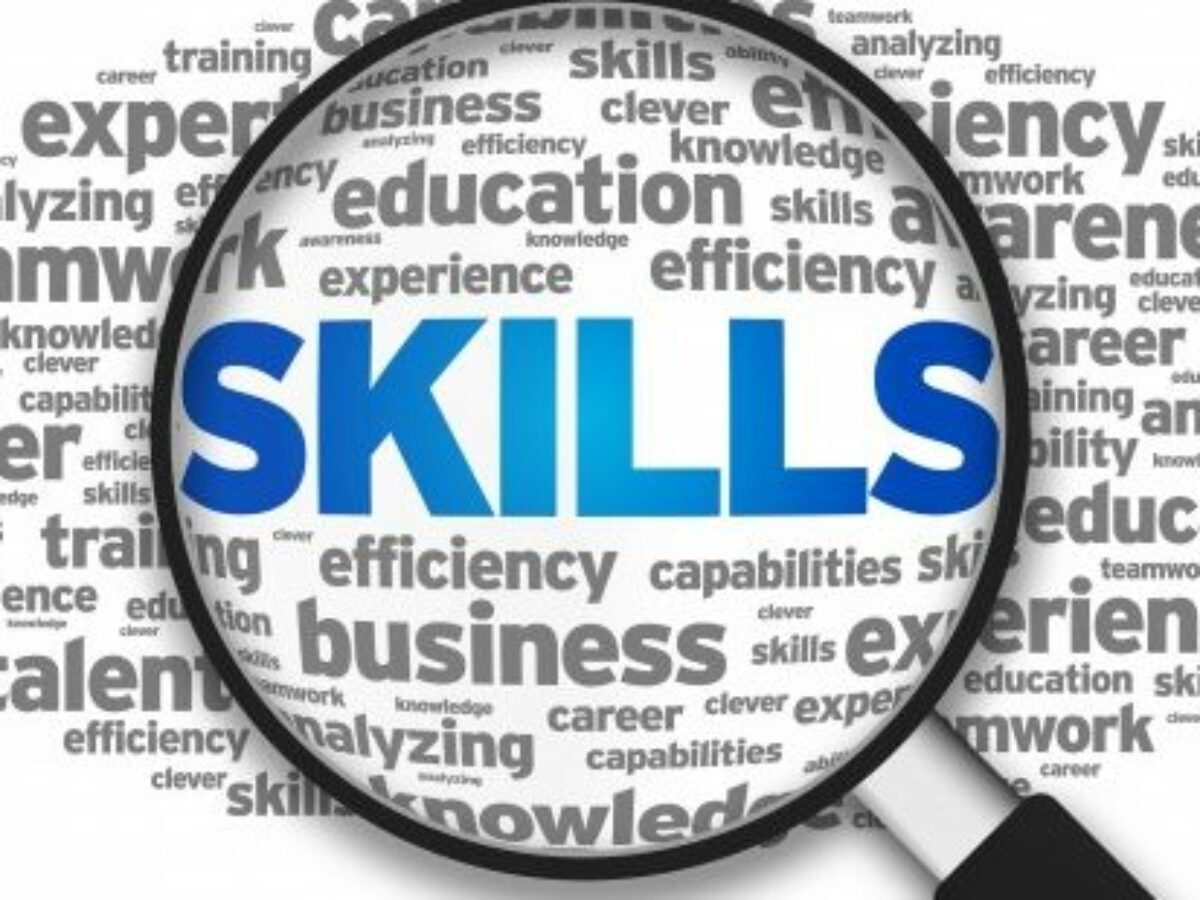Working smarter with data – leadership and skills for digitisation by Richard Jenkins and Kerrie Clarke

@AuManufacturing‘s editorial series, ‘Working smarter with data‘, continues today with insight into the skills leaders, companies, and Australia needs to develop. Here manufacturing skills specialists Richard Jenkins and Kerrie Clarke suggest a wider lens for SMEs and their leaders and managers when looking to embrace new digital technologies.
COVID-19 has pushed enterprises to pivot, reinvent, take their business online, work remotely and communicate virtually.
This isn’t necessarily a different direction…we have all been catapulted forward and our challenge for enterprises now is how to bring their workforce up to speed.
The Morrison Government’s plans for an updated digital ‘backbone’ aims to propel businesses into a technology led productive and innovative future, so what will a ‘digital transformation’ look like for manufacturing and will it be same for all manufacturers?
The short answer is that it will look different across sectors and enterprise sizes.
The large and high-tech manufacturers are already ahead of many industries when it comes to implementing leading technologies. Artificial Intelligence, Robotics, Automation and the Internet of Things, 3D Printing, Additive Manufacturing and other technologies are being used to drive innovation along their value chains to suppliers and customers.
However, what about the SMEs? Are they followers or leaders and do they face the same challenges in embracing a digital future?
For many SME manufacturers, the journey towards digitalisation still has some kilometres to tread and this will require special attention. While many have effectively integrated ‘Industry 3.0’ type computing technologies, most SMEs are a way off the Industry 4.0 type digitisation that provides real time connectivity that will reinvent the way they work.
These are the technologies that help turn manufacturers into agile companies able to predict market trends, design and deliver more customer focused product solutions, help reduce carbon footprints, and drive growth in a new post-Covid and also greener economy.
One of the key points to note with SMEs is that not all SME manufacturers will increase their level of digital capability as a deliberate strategy to increase their business.
Many will make that strategic choice but for others it will be a forced decision. They will have to embrace new Industry 4.0 digital processes just to keep their business.
In a way similar to adoption by SMEs in earlier decades of lean manufacturing, they will be forced to implement new cloud based systems if they are in a larger enterprise’s value chain just as previous suppliers to Toyota were forced to adopt Toyota Production System practices if they were to keep their business – and as we know from the automobile industry even adopting the larger enterprise systems is no guarantee of survival.
But choosing to do nothing is not an option. This brings in questions of culture and motivation – will the SME embrace all of the new technologies they could and should embrace if they are reluctantly being led into the brave new world? Will there be enthusiastic and effective SME leadership that takes their workforce into a world of new skills and knowledge?
A study conducted by the German National Academy of Science and Engineering (Acatech), Managing the Digital transformation of Companies, provides some useful insights into the process required for effectively transforming digital capacity of manufacturing organisations.
Its Industry 4.0 Maturity Index identifies six development stages that will transform an organisation into a learning, agile company. It looks beyond simply automating or applying digital technologies in isolation, and towards an integrated entity that is ready for what the future will bring.
The Industry 4.0 Maturity Index provides some food for thought for Australian manufacturers embarking on a digital transformation. It can be applied to any size operation and technology needs and we think it’s especially relevant for SMEs.
The stages start at Computerisation and Connectivity which sees automation and precision of production processes, and operational connectivity that we see in technologies such as computer aided design and manufacture (CAD/CAM).
Visibility and Transparency then brings us into real time monitoring of all processes across all operations. It provides an ability to quickly identify issues in production and make adjustments as required by integrating systems like PLM, ERP and MES into a single comprehensive picture.
For an SME this may take the form of integrating their own systems but it may also take the form of integrating their data and systems with those of their larger customers. It is one thing to supply your finished product to your multinational customer, but giving real time access to your inventory, production, planning and maintenance systems and so on may be a real culture shock.
The Acatech study lists Predictive Capacity and Adaptability as the mature stages of transformation. They enable the company to depict future scenarios, predict challenges, and prepare high quality forecasts and recommendations. At this point the company will be using big data and automated decision-making processes to determine the most efficient adaptations and implement these automatically.
A very important feature of the study’s Index is its focus not only on recognising digital capabilities and systems but also on the important role of organisational structure and culture. Technology is only part of the story.
The study emphasises that historical organisational standards, rigid structures or a conservative culture can be obstacles to progress. This is the real lesson for SMEs – will they be dragged kicking and screaming into the new digital world or will they see an opportunity to expand their horizon and go for growth? This is a question that can be obscured by the current Covid environment, but it is one that must be addressed by SME leadership.
For a SME, the technological journey may be easier to see and address than the organisational preparation. If the goal is to create agile organisations, then the organisation itself needs to be agile. Traditional structures may need to be challenged to ensure individuals are able to take responsibility to lead and act on real time information.
Culture becomes critical with a high value placed on lifelong learning.
Much is on the shoulders of managers. Flexibility may be required to create and resource teams that develop new projects or problem solve issues. Ability to critically analyse information, structured and effective communication systems and protocols, and strong networks across the value chain are also central.
Overall the study stresses that technologies should be selected that support and equip the workforce to achieve relevant organisational goals, and to work in a manner that upholds the desired culture. Ultimately the workforce must be willing and able to drive digitisation.
Some organisations will need to re-vision their future state. For a SME owner or manager that has built their business from scratch, the biggest hurdle may be to recognise that the new vison cannot just come from the past, their own hard-won knowledge and their background.
A willingness to embrace coaching, mentoring and other outside visioning processes may be just as important as the new cloud-based software.
For most SME leaders embracing digitalisation will require development of leadership capabilities, review of workplace culture and practices, and formal planning processes that draw on information and expertise from across the enterprise.
Without giving this reinvention its due attention, the effectiveness of digital transformations will be thwarted. These are skills that may not reside within SMEs and could be easily lost in micro-credentials and skills sets that only focus on technology roll out.
There is much work underway to support Australia’s digital transformation.
Our point is to not let the shine of the new software and systems disguise the challenges that SME leaders face in embracing a digital future and their need for a wide range of supports.
Manufacturers would be wise to consider where they are in the journey and how they can best gain leverage from the support on offer. It may be in infrastructure investment, skill development or organisational culture change.
Probably it’s all three; digital transformation is a big journey.
Richard Jenkins is one of Australia’s most experienced VET consultants, specialising in manufacturing for more than 21 years. Kerrie Clarke is an organisational coach and facilitator with 16 years experience in the VET sector. She is the author of Manufacturing Skills Australia’s Environmental Scan documents. Together Richard and Kerrie have been instrumental in the development and maintenance of national Training Packages and delivery programmes across manufacturing.
@AuManufacturing‘s series is brought to you with the support of Fusion5, the largest 5-Star NetSuite Partner in Australia & New Zealand, providing full-featured cloud business management software solutions.

Subscribe to our free @AuManufacturing newsletter here.
Topics Manufacturing News Technology
@aumanufacturing Sections
Analysis and Commentary Awards Defence Manufacturing News Podcast Technology Videos






